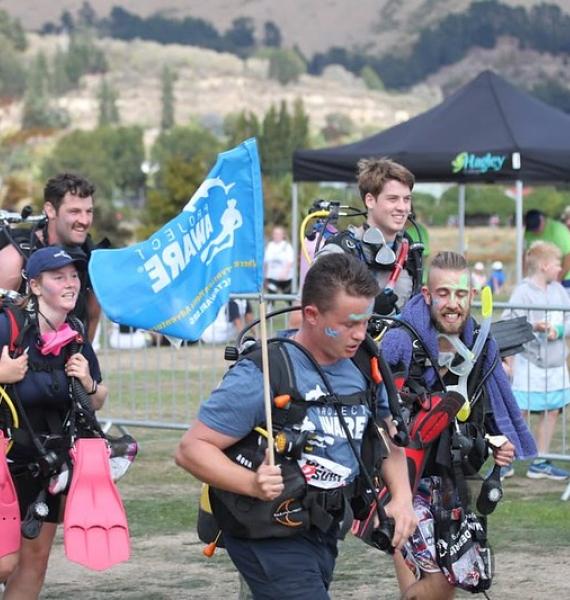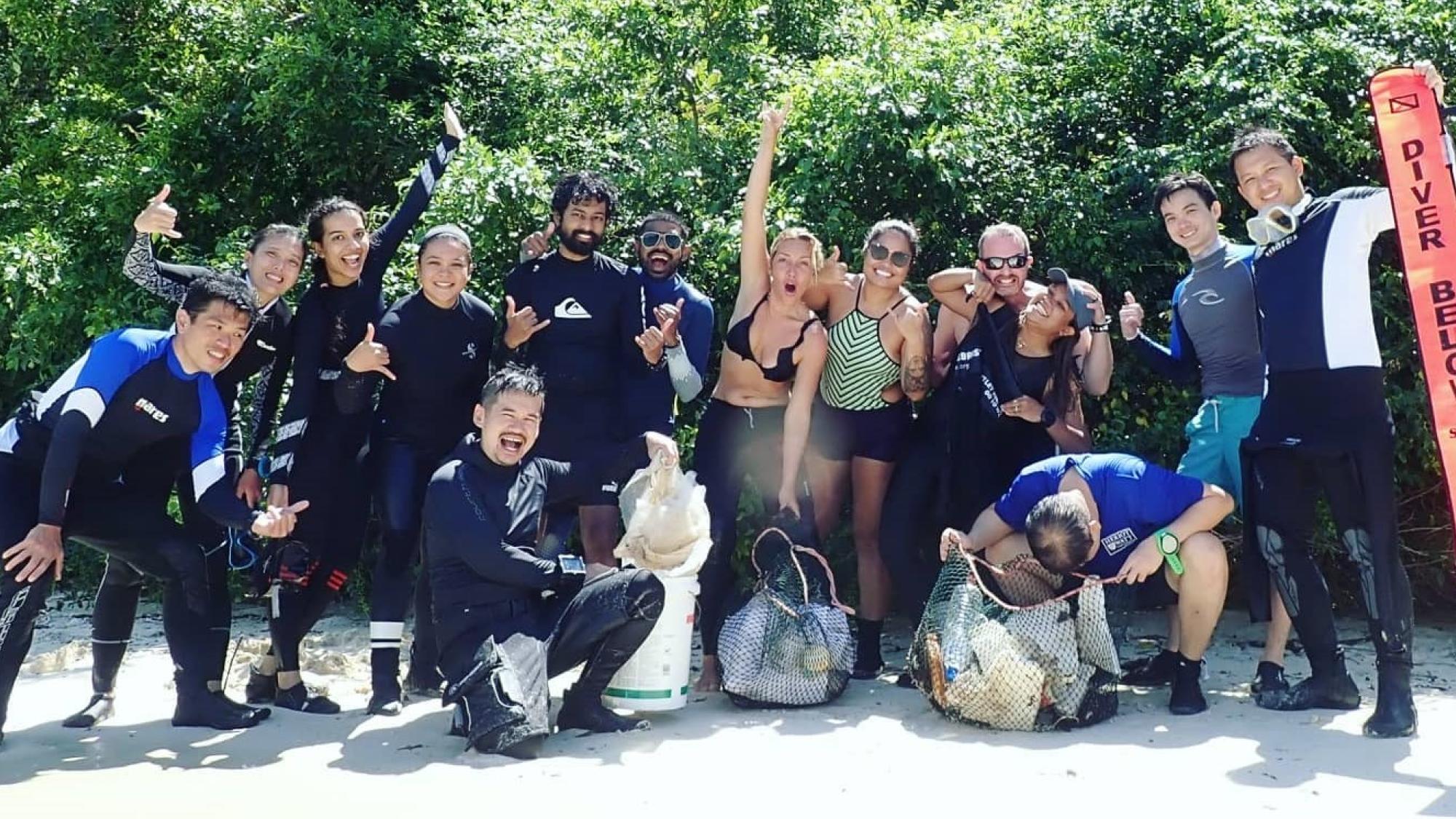
How To Participate in a Dive Against Debris®
Check out the new Dive Against Debris Survey Guide
The Dive Against Debris survey guide is the best tool to help you jump into action when submitting your marine debris removed on your clean up dives. It provides a simple step by step walkthrough of the submission process, along with tips and trick on how best to share your marine debris stories. Don't let your dives go to waste!
What is a Dive Against Debris diver?
A Dive Against Debris Diver takes direct 'fins on' action for the ocean, collecting critical survey data from any or every dive that can be used by marine researchers and policymakers for conservation efforts. No one is better suited to tackle marine debris than PADI Divers.

Prerequisites
- Minimum certification: PADI Junior Open Water Diver (or equivalent), PADI Freediver or PADI Advanced Mermaid
- Minimum age requirement: 10 years old
- As a one dive specialty, the Dive Against Debris course counts as an adventure dive in the PADI Advanced Open Water Course.
- Divers may credit the specialty certification toward the PADI Master Scuba Diver rating.
Why should you become a Dive Against Debris Diver?
Help keep your favorite dive site and local marine environment free of debris and contribute to the largest global underwater database in the world. To reduce marine debris by 50% in targeted countries by 2030, we need everyone working together at local, national and international levels. See PADI AWARE’s Marine Debris page for more information.
The primary goals of this Dive Against Debris course are to leverage marine debris surveys you and your fellow divers submit for the purposes of debris management and control, and to directly address the problem by removing debris. These actions contribute to critical scientific research that advances the PADI Blueprint for Ocean Action.
How do I become a Dive Against Debris Diver?
Any PADI Junior Open Water Diver, Freediver or Advanced Mermaid or higher can take the Dive Against Debris Speciality course and help tackle marine debris issues head on. Become a diver to join the world’s largest underwater citizen science movement on the planet. Through this course you’ll be able to participate in regular Dive Against Debris surveys and become part of the solution.
Step-By-Step Guide
Become a diver to join the world’s largest underwater citizen science movement on the planet. Any PADI Junior Open Water Diver, Freediver or Advanced Mermaid, can help to tackle marine debris issues head on. It's as easy as logging your dives.
- Find your local PADI Dive Center to get certified in Dive Against Debris. This is a standardized Adventure Dive, and one dive specialty, so you can get your Advanced Open Water Certification and Dive Against Debris at the same time.
- Using your PADI Single Sign On (SSO) you will access the Conservation Action Portal (CAP) via action.padiaware.org. This allows you to submit your Dive Against Debris survey data (and more) after your dive. (Use your profile to log into the app)
- You can also report your Dive Against Debris Data in CAP with the new PADI AWARE App. (Found on the Apple store or Google Play)
- Download the Survey Toolkit before your dive! This kit has all the essentials for survey success.
- Search the Conservation Activities Locator to find a Dive Against Debris survey near you.
- Check out the Dive Against Debris Map: map.padiaware.org

The PADI AWARE App
The PADI AWARE Conservation action portal is here. CAP is a one-stop digital hub designed to empower the global dive community to take meaningful conservation action—both above and below the water. These collective actions accelerate the PADI Blueprint for Ocean Action, helping us meet targets in marine debris, protected areas, vulnerable species, and habitat restoration.
- Download on the Apple store or Google Play

Share Your Debris Story
Show us what you’re doing to fight the war on litter! Share your photos online, and tag us on social media @padiaware using the following hashtags: #DiveAgainstDebris | #EveryDiveaSurveyDive | #UglyJourneyofTrash | #AWAREImpact
Key Photo Ideas & Guidelines
We want to see photos and videos that reflect safe interactions with the underwater environment. Remember to wear your snorkel, and proper gear in media content, as allowed by your local laws. Some ideas for your content could be as simple as showing the PADI AWARE brand, marine animals underwater during cleanups, or you and your buddy teams with your debris haul, above and below the surface!
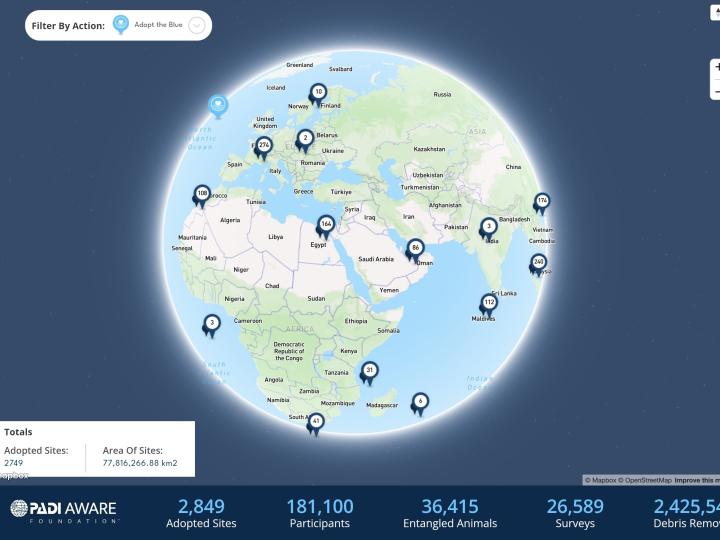
See Your Data on the Global Map!
Once you have reported your survey, it enters our global database, supporting the development and implementation of policies around the world to improve solid waste management.
The total pieces of debris reported globally surpasses 2.5 MILLION, due to the active participation from divers and PADI Mission Hubs, the 6,600 Dive Centers, and nearly 126,000 PADI Instructors around the world, committed to creating ocean change and cleaner seas.
Common Mistakes and Helpful Hints
Dive Against Debris surveys collect data on marine debris found on the seafloor. Any debris found by those who are not scuba diving can be submitted to our partners at The Ocean Conservancy.
Dive Against Debris surveys should only be submitted if they were conducted on Scuba AND any debris recovered was removed from the sea/river/lake bed. These points are what makes our data so unique and important. Having these parameters in place for submitting data restricts some of the variables and makes the data set more valid and reliable.
Sticking to these principles makes our database unique. We are the only database in the world logging marine debris - it is absolutely vital that this is the data we collect.
Parts of the survey which can indicate these mistakes include:
- Minimum or maximum depth = 0m/ft
Longitude and latitude should always be in the water at the location the survey dive took place.
Ways to double check:
- Zoom in on the map to ensure the pin falls in the water
- View the map on satellite mode as this gives a better depiction of the location - right now this is not possible on the app, but updates to resolve this are coming soon!
1 dive = 1 survey = 1 submission.
This is a parameter which helps us keep the database more accurate. One data submission should correspond to the debris removed during an individual survey dive.
Removing something from the water, no matter how small it is, is going to have a weight.
Survey duration is calculated as the average time spent underwater removing rubbish based on the number of buddy pairs.
E.g. If there were 3 buddy teams:
- Buddy Team A 42 minutes
- Buddy Team B 48 minutes
- Buddy Team C 51 minutes
Survey duration = (42+48+51) / 3 buddy teams = 47 minutes
Our Key Sponsor

Seiko: Official Partner of PADI and PADI AWARE Foundation’s Marine Debris Program
As a proud sponsor of the marine debris program, Seiko will further the impact of the important work of the flagship citizen-science program, Dive Against Debris®, that not only removes debris but, perhaps more importantly, leverages findings to inform ocean-friendly policy change to prevent further pollution from entering the ocean. Together, Seiko, PADI, PADI AWARE Foundation and the global dive community will provide critical survey data that can be used by marine researchers and policymakers for conservation efforts.


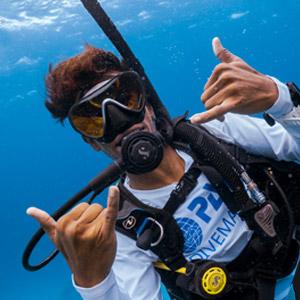




 Marine Debris
Marine Debris
 Shark & Ray Protection
Shark & Ray Protection
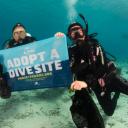 Adopt The Blue
Adopt The Blue



















